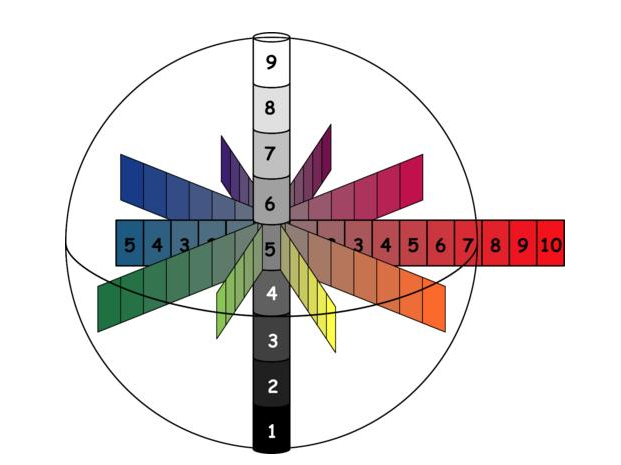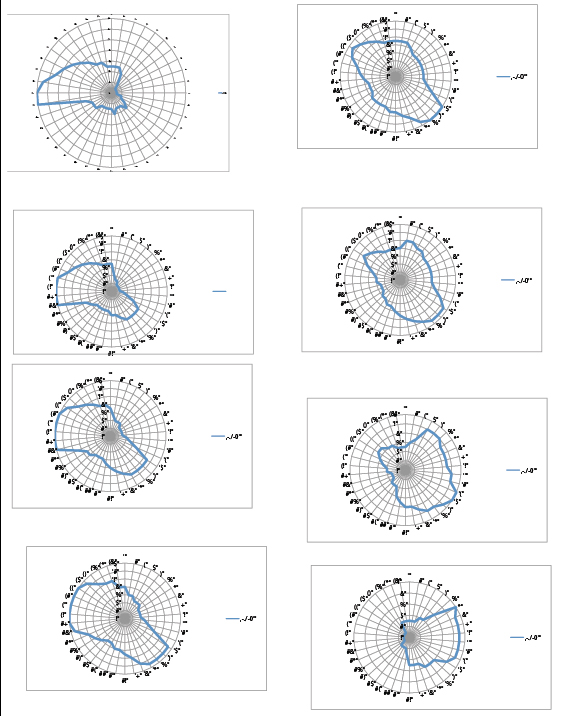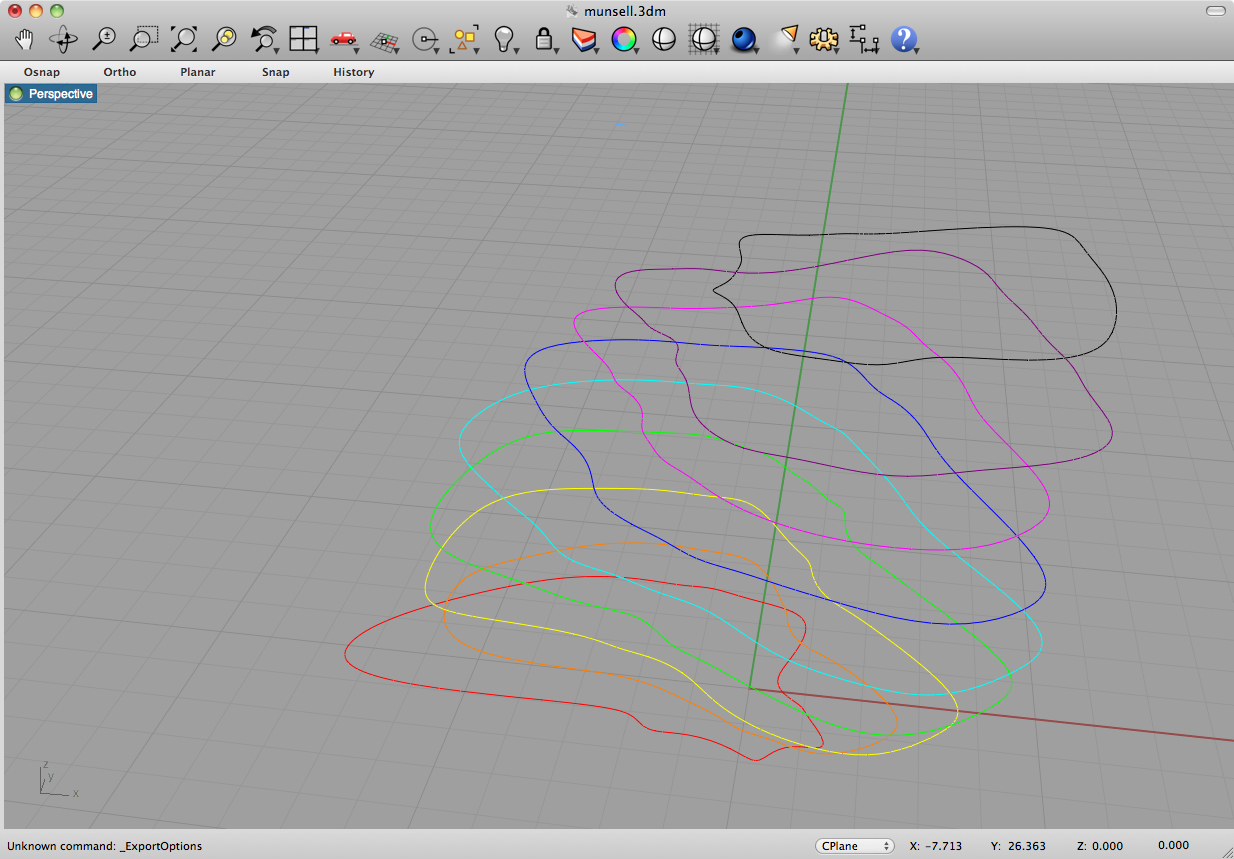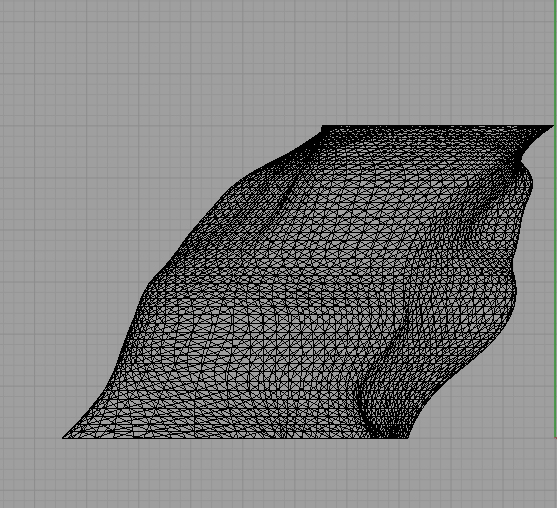
3D PRINTING

The Munsell system is based on how people perceive colors. At its core is a set of data from perceptual studies (done in the late 1930's) where people were asked to judge the differences in color pairs. The result is a data set which defines a perceptually uniform color space.

I wanted to recreate this graph in a much more complete and integrated way that it can be shown in 2 dimentions. It is essentially a graph of chroma, also known as brightness or saturation. This Project really lends itself to 3D printing because it's generated from a # set, and greatly benefits from the accuracy of a 3D printer, as opposed to the clay, wax, and bronze that I made it from originally.
I counted boxes on the Munsell interface here http://www.triplecode.com/munsell/ (which I had never realised was invented by another Media Laber!) and made this:

I had hoped to print the project in color, since this makes the intention of the graph much clearer, however just getting the shape modelled in Rhino was a complex task - determining the color based on the colors on a computer screen, mapping them on to the form and calibrating the printer to these colors, would have been a monumental task. So I comprimised with just making the shape.
And from the #'s made a series of radial charts:

Got them into Rhino and lofted the sections:



I sent if off to print in the arch shop on Saturday morning and then took off for the weekend.
As far as I have heard it is still printing, but hopefully it came out ok.

3D SCANNING
I wanted to try scanning a promegranate in the CT machine, since these fruits have such a beautiful hidden structure that we never get to see intact.
I set it up Friday evening with Nadya's help and we sent it for an 18 hour scan overnight.
We got a very clear image of the stem as we were setting it up, although it was difficult to get a clear image of the seed structures that I wanted to capture. Nadya guessed that if we set it for the level for the stem, then it would capture the internal structures as well. Sadly, in the final scan, the whole fruit is black, and you can't see anything. Another problem I encountered was significant shrinkage of the pomegranate. I tried to compile the tiffs in the lab, but the program is unable to both scan and proccess old scans at the same time and Dina had just begun to scan her piece of coral.
Kenny suggested that I cut the fruit into cubes and suspend them in water or alcohol in order to stabilize the shrinking. I will be trying again, perhaps with sections or with the whole fruit.